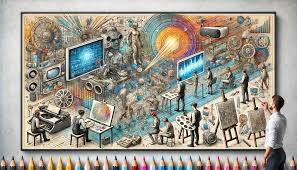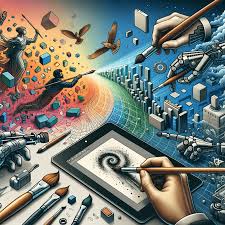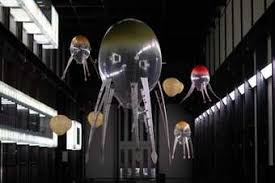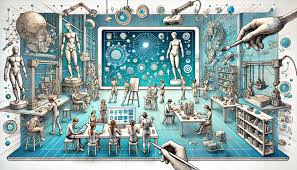Technology in Modern Art: Transforming Creative Expression
Introduction
The intersection of technology and art has significantly reshaped the landscape of creative expression in the modern era. As technological advancements continue to evolve, they challenge traditional definitions of art, expand artistic possibilities, and alter the relationship between artists and their audiences. This essay explores how technology has influenced modern art, examining the emergence of new mediums, the impact of digital culture, and the ways in which artists use technology to critique contemporary society.
The Evolution of Artistic Mediums
- Digital Art
Digital art emerged in the late 20th century as artists began to explore the potential of computers as a creative tool. Utilizing software programs like Adobe Photoshop and Illustrator, artists can manipulate images, create animations, and design intricate visual compositions. Digital art encompasses various forms, including digital painting, 3D modeling, and generative art, where algorithms generate visual outputs.
Case Study: “The Treachery of Sanctuary”
Artist Chris Milk’s “The Treachery of Sanctuary” is a groundbreaking installation that uses digital projection and motion sensors to create an interactive experience. The work explores themes of life, death, and rebirth, allowing viewers to engage with the art in a unique and personal way.
- Interactive Installations
The rise of interactive installations has transformed the way audiences experience art. Artists utilize sensors, projectors, and other technologies to create immersive environments that respond to viewer interactions. This engagement allows audiences to become active participants in the artistic experience rather than passive observers.
Example: Rafael Lozano-Hemmer
Rafael Lozano-Hemmer’s installations often incorporate technology to create interactive experiences that explore themes of identity and surveillance. In works like “33 Questions per Minute,” the artist uses a computer algorithm to generate rapid-fire questions based on the audience’s interactions, challenging perceptions of language and communication.
- Virtual Reality (VR) and Augmented Reality (AR)
The advent of virtual and augmented reality has opened new frontiers for artists, enabling them to create entirely immersive environments. VR allows viewers to enter digital spaces, while AR overlays digital elements onto the physical world, enhancing real-world experiences.
Case Study: “The Night Cafe”
“The Night Cafe,” a VR experience inspired by Vincent van Gogh’s painting of the same name, immerses users in a re-creation of the artist’s famous café. This project not only highlights the potential of VR in bringing art to life but also allows users to interact with the environment in ways that traditional art forms cannot.
The Influence of Digital Culture
- Social Media and Art
Social media platforms have revolutionized how artists share their work and connect with audiences. Platforms like Instagram, TikTok, and Twitter provide artists with the means to showcase their creations, receive immediate feedback, and build communities. This democratization of art has enabled diverse voices to emerge, challenging traditional gatekeeping in the art world.
Example: The Rise of Influencer Artists
Artists like @davidmuhammad and @amandapalmers have gained massive followings on social media, leveraging their platforms to engage with audiences directly. These influencer artists often blur the lines between art and commercialism, raising questions about the commodification of creativity in the digital age.
- Crowdsourcing and Collaboration

Technology has also facilitated collaborative art-making and crowdsourcing projects. Artists can engage with audiences in new ways, inviting them to contribute to the creative process. This participatory approach fosters a sense of community and shared ownership over the artwork.
Case Study: “The Obliteration Room”
Yayoi Kusama’s “The Obliteration Room” invites visitors to enter a stark white room and add colorful dot stickers throughout the space. This interactive installation transforms the environment through collective participation, emphasizing the power of collaboration in artistic expression.
Technology as a Tool for Critique
- Social Commentary through Digital Media
Modern artists frequently employ technology to critique contemporary society, addressing issues such as consumerism, surveillance, and environmental degradation. By harnessing digital tools, artists can convey complex messages in innovative ways.
Example: “The Glass Room”
“The Glass Room,” an installation by Tactical Tech, explores the implications of data privacy and surveillance in the digital age. Through interactive displays and discussions, the installation prompts viewers to consider their relationship with technology and the consequences of living in a data-driven world.
- Generative Art and Algorithms
Generative art leverages algorithms to create visual works, reflecting the role of technology in shaping contemporary culture. Artists can explore themes of randomness, control, and the relationship between creator and creation.
Case Study: Casey Reas
Casey Reas, co-founder of Processing, utilizes programming languages to create dynamic artworks that evolve over time. His work challenges traditional notions of authorship, as the algorithm generates variations that blur the line between artist and machine.
The Impact of Technology on the Art Market
- Digital Collectibles and NFTs

The rise of non-fungible tokens (NFTs) has transformed the art market, enabling artists to tokenize their digital creations and sell them as unique assets. This innovation has sparked debates about ownership, value, and authenticity in the digital realm.
Example: Beeple’s “Everydays: The First 5000 Days”
Beeple’s NFT artwork, sold for $69 million at Christie’s, exemplifies the potential of digital art in the contemporary market. The sale highlighted the growing acceptance of digital art as a legitimate form of investment, challenging traditional art market paradigms.
- Online Galleries and Virtual Exhibitions
The COVID-19 pandemic accelerated the shift toward online galleries and virtual exhibitions, allowing artists to reach broader audiences beyond geographical limitations. Virtual platforms provide innovative ways to experience art, though they also raise questions about the nature of presence and connection in the art world.
Case Study: “The Art of Virtual Reality”
Many galleries and museums have embraced virtual reality to host exhibitions that would otherwise be impossible due to space or logistical constraints. These experiences enable audiences to explore artworks in immersive environments, enhancing their understanding and appreciation of the art.
Challenges and Critiques of Technology in Art
- Authenticity and Value

The rise of digital art and NFTs has prompted discussions about authenticity and value in art. Critics argue that the ease of reproduction in digital media undermines the uniqueness traditionally associated with artworks. This raises questions about how we define art and its worth in a digital landscape.
- Technological Dependence
As artists increasingly rely on technology, concerns about the potential loss of traditional skills and techniques have emerged. While technology offers new possibilities, there is a risk that the essence of craftsmanship and tactile engagement may diminish.
- Digital Divide
Access to technology remains a significant issue, with disparities in resources impacting who can participate in the digital art landscape. Artists from marginalized communities may face barriers to accessing the tools and platforms necessary to share their work, perpetuating inequalities in the art world.
Conclusion
The integration of technology into modern art has transformed the way artists create, share, and critique their work. From digital art and interactive installations to the rise of NFTs and online galleries, technology continues to shape artistic expression and redefine our understanding of art itself.
While these advancements offer exciting possibilities for creativity and engagement, they also raise important questions about authenticity, value, and access. As artists navigate the complexities of the digital age, they will undoubtedly continue to push the boundaries of what art can be, exploring new mediums and challenging societal norms in the process.
In embracing the interplay between technology and art, we gain a deeper understanding of the human experience, the nature of creativity, and the transformative power of artistic expression in a rapidly changing world. As we look to the future, the dialogue between technology and art will remain vital, shaping the cultural landscape and inspiring new generations of artists and audiences alike.

